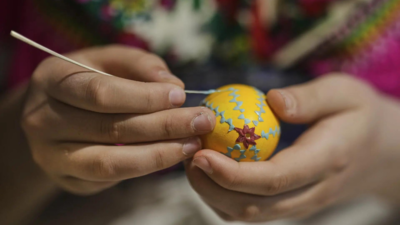Reviving Japan's Sento: Cultural Bathhouses Under Threat

In Japan, sento, traditional communal bathhouses, hold a significant place in the daily lives of many, characterized by a set of established customs and rituals. These gender-segregated bathhouses have served not only as spaces for relaxation but also as vital community hubs where social interactions and contemplative moments unfold. However, the number of sento has dramatically decreased over the years; a stark decline from nearly 18,000 in the 1960s to roughly 2,000 remaining today. In recent times, these historic institutions have gained newfound attention as various initiatives aim to preserve, revitalize, and celebrate their cultural significance, bringing them back to the forefront of communal life.
Unlike onsen, which are outdoor hot springs fed by natural geothermal sources, sento are typically indoor facilities that utilize tap water. They are characterized by their high ceilings designed to allow steam to rise freely. Commonly found in residential neighborhoods, the design and ambiance of sento can vary greatly depending on their location, history, and ownership. For instance, Miya-zukuri bathhouses are traditional wooden structures, resembling temples or shrines and crafted by skilled carpenters who took immense pride in their work. According to activist Sam Holden, co-founder of Sento & Neighborhood, a not-for-profit organization dedicated to the preservation of sento, these craftsmen were deeply respected in their communities. In contrast, super sento are larger, commercial spas that attract customers with additional amenities such as massage treatments and dining options.
The origins of sento can be traced back to the sixth century, rooted in the practices of spiritual purification that were integral to both Buddhism and Shinto. Initially housed in temples, communal baths gradually became accessible to the broader populace. The first sento in Edo, now modern-day Tokyo, opened its doors in 1591, providing an essential service to the ever-growing urban population that lived in cramped conditions without private bathing facilities. During the Edo period (1603-1868), sento culture blossomed, becoming central to neighborhood life, where people gathered to socialize and share gossip. As Holden notes, many residents lived within walking distance of a sento, which facilitated intergenerational communication and fostered strong local networks. Bathhouses were not just places for washing but vital social centers where children could be watched or chastised by other members of the community.
However, as Japan's economy boomed in the aftermath of World War II, the demand for sento began to wane, with an increasing number of households installing private bathrooms. As a result, traditional bathhouses faced challenges due to high maintenance costs and the burden of aging proprietors who struggle to find successors willing to take over these historic establishments. Consequently, the survival of sento has become a pressing concern among advocates who recognize their cultural importance.
Among those leading the charge in revitalizing sento is architect Kentaro Imai, who has played a crucial role in breathing new life into 23 public baths throughout Japan. Imai's journey with sento began in his early 30s when he opted for a rental without a bath and discovered the value and solace that public baths provided. Inspired by his experience, he founded the Kentaro Imai Architectural Office in 1998, focusing on designing each project around a unique concept. For instance, the Goshiki-yu sento in Tokyo serves as a healing space, integrating elements of the yin-yang and five-elements philosophy into its lighting and color schemes. Similarly, Fukuno-yu, located in a historic temple area, draws inspiration from auspicious designs and traditional sliding doors. Meanwhile, Yoshino-Yu features a small courtyard garden and a veranda, elements reminiscent of older wooden sento that have largely disappeared from the landscape.
In addition to these restorative efforts, a new wave of sento is emerging, catering to a younger, broader clientele by transforming traditional spaces into trendy hangouts equipped with modern amenities. Jo Nagasaka, founder of Schemata Architects, has been at the forefront of this movement, redesigning two bathhouses in Tokyo to incorporate features like craft beer, saunas, and even DJ booths for music events. This innovative approach aims to create a community atmosphere distinct from typical bars or clubs.
The Kogane-yu and Komae-yu bathhouses, both redesigned by Schemata, occupy the ground floors of multi-story apartment buildings. In these spaces, gender divisions are maintained through partition walls with openings at the top, fostering a sense of familial connection and convenience. The first project, Kogane-yu, was undertaken in 2020 at the request of third-generation owner Takuya Shinbo, who sought to attract young Tokyo residents. The result is a modern, industrial-chic space featuring birch plywood lockers, beige porcelain tiles, and murals created by local artists, including the renowned Iichiro Tanaka and manga artist Yoriko Hoshi.
The artistic aspects of sento are particularly noteworthy, with expansive, decorative murals enhancing the bathing experience. Only three muralists currently specialize in this craft in Japan, and their work requires not only artistic talent but also a deep understanding of the space and efficient execution, enabling bathhouses to close for minimal time during renovations. Stephanie Crohin, Japan's ambassador to sento culture and author of three books on the subject, highlights how murals often reflect regional characteristics, such as the iconic portrayal of Mount Fuji in the greater Tokyo area, symbolizing tranquility and good fortune.
Another notable project is Kuwamizu, designed by Mieko Watanabe of wAtelier, which serves as both a bathhouse and an art gallery in Kumamoto, Kyushu. Local designer Toshinori Yonemura created stunning vignettes of a nearby lake that are unveiled gradually as bathers immerse themselves in the experience. Watanabe emphasizes the importance of access to bathing facilities, especially following natural disasters, stating that the rituals of washing away daily stress can reinforce cultural identity and a sense of community among survivors.
Sento embody the spirit of community, encapsulated in the Japanese phrase hadaka no tsukiai, meaning naked communion, which describes the unique bond formed in shared bathing spaces. In these environments, individuals of all ages and backgrounds engage openly and honestly, stripped of their societal roles. Watanabe notes that sento present a rare opportunity for people from diverse walks of life to connect, providing respite amid societal challenges like economic stagnation and population decline.
Shinya Hayasaka, a medical doctor and professor at Tokyo City University, has devoted over two decades to researching the health benefits of bathing. He highlights that bathing up to seven times a week can lower the risk of developing depression by 24 percent. Sento typically offer multiple baths at varying temperatures, with hotter options preferred by older patrons. Hayasaka recommends a 10-minute soak in water heated to around 40 degrees for optimal benefits. Some facilities even enhance their offerings by infusing the water with minerals.
As the global wellness trend has popularized Korean jjimjilbangs in cities like Los Angeles and New York, the uniqueness of sento remains firmly rooted in Japanese culture. However, Watanabe and Nagasaka envision a future where the sento concept could potentially be introduced to international audiences, aligning with the growing interest in healthy and spiritual living. Ultimately, as Holden articulates, sento are integral to the ordinary rhythms of neighborhood life, providing individuals and families with a deep sense of belonging and connection to their communities. Ensuring the survival of these cherished institutions is essential for maintaining the cultural fabric of Japan.

















